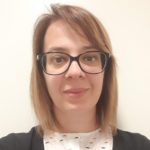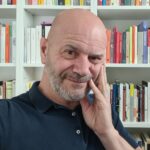
Study, research and organizational learning: Fondazione Bruno Kessler and the TESEO project living lab
An opportunity for reading and reflecting to mark the celebration of the European Diversity Month 2023
Some years ago, May was established as the European Diversity Month with the aim of putting the spotlight on the importance of diversity and inclusion in the workplace and in society. We offer below the reflections of Manuela Bacca – HR Expert in D&I management, Alessandro Dalla Torre – Head of Human Resources at Fondazione Bruno Kessler and Fondazione Hub Innovazione Trentino (HIT), and Valeria Fabretti, researcher at FBK-ISR.
Fondazione Bruno Kessler hosts an international hub of research and innovation, people from different nationalities and backgrounds with different cultures and religious beliefs.
In order to best accommodate the diversity present and promote an open and inclusive work environment, the Foundation has in recent years activated multiple initiatives geared toward supporting and listening to the needs of its staff, also making use of the distinctive contribution of the internal research community to identify experimental and innovative investigative tools and solutions.
This approach has been supported by the recent contribution that the TESEO project, coordinated by the Center for Religious Studies and funded by CARITRO, is providing to the Foundation’s reflection steps regarding the possible setting up of a “silence room” at the Povo site to host prayer and meditation for people with different religious affiliations and offer a new space for community coexistence.
Manuela Bacca, HR Expert D&I
The HR function is often and inevitably called upon to interpret the organizational context in which it operates. And the call to which it must respond has become increasingly demanding over time.
While originally the dimensions of the organization that used to lie with the HR function – besides the administrative management of the labor contract – were connected to production safety and health aspects involved from time to time, over time many others have been added to them.
The focus on physical integrity, for example, has extended to all aspects of well-being: biological, first and foremost, but also mental and even social and relational well-being.
Such an extension of the horizon under investigation, and thus of those safeguard means that are under the responsibility of the head of the HR function, is largely due to the evolution over time of conceptual visions of the organization itself.
To the image of a static organization, in that tied to the economicist equation hinging on production factors and ends, more dynamic and articulated ones have gradually been proposed; i.e., images expressing the complexity brought into play by the system of relationships and interactions involved in and stemming from the internal and external context of an organization increasingly understood in its role as an agent of economic and social change.
The trajectory marked by the evolution of conceptual visions of the organization – a trajectory that is all but obvious and linear – has, among other things, brought to the fore the importance played by the system of relationships and sense-making that is invariably activated by workers in the making of their professional experience between productive means and ends.
Alongside the set of skills, knowledge and behaviors acted upon, this system of relationships and meaning production has placed the organization and production factors in a generative tension to the point of determining their cultural and institutional dimensions.
Here, then, is where the function of HR, and that of Management in general, is called to measure itself against an unseen area of the organization, namely, that changing area shaped by work meeting people, production purposes meeting with personal cultures, constraints meeting with freedom.
It is very hard, I think, to draw the map of such an area. Hard, not only because of its inherent mobility. Hard, I would say, because of its ethical and political implications.
On such a map, in fact, the requests and reasons of which the weave of even very different professional and personal experiences is made are to be transferred.
A weave that tells the story of the organization and, at the same time, the story of the lives of the people – workers – who are both tangible and intangible expressions of that organization but, always and in any case, a distinctive factor for the economy of its operational outputs and reputation.
The impossibility to adapt such an area to one of the many maps that the literature and the repertoire covering organizational matters available to those who work in the context of human resources and management, determines that its sphere of attention and study should shift to the one, less strong and more empirical, represented by the experimental laboratory understood here as a place and community of practice.
It is, in fact, in the organizational space deliberately and consciously devoted to the production of new knowledge that work and culture, study and experimentation, person and institution – interacting with each other – develop and identify the terms of the reciprocity pact that underlies the material and formal status of a given organization and its social and community dimension.
The vital importance of such an organizational space is not only formally enshrined in Fondazione Bruno Kessler’s Statute, which – among its related aims, purposes, methods and principles – sets for the Foundation the priority of research and innovation with a high economic and social impact. It, indeed, is constitutively imprinted in the intuition of its founder who, not by chance, looked at this study and research institution – yesterday the Istituto Trentino di Cultura, today Fondazione Bruno Kessler – as a laboratory for what he, as a far-sighted “zôon politikón,” envisioned as a “Special Autonomy” if and insofar as it was capable, precisely, of making itself a place of social innovation, of affirmation and promotion of people’s values and of removal of inequalities.
Briefly described, this is the special system, that is both cognitive and experiential, through which organizational learning and scientific research – contaminating each other without prejudice or epistemic stretches – give shape, starting from current and concrete needs, to real case studies put in place to make innovation an opportunity for social promotion.
This is certainly the case with the “Teseo” project, a series of steps for reflection and experimentation grafted onto the need – concrete and current for a scientific community with widely varied expressions in terms of geographic origin and culture – to set up a space dedicated to prayer and meditation within an open and inclusive working context.
The project can count on the contribution of the Foundation’s Human Resources and Corporate Assets departments and actually takes the form of a living lab, identifying stakeholders and the local context as active interlocutors in both study and research activities and organizational learning work.
Alessandro Dalla Torre – Head of Human Resources Service
The places we pass through and inhabit are not just “settings” of our experiences. Rather, it is our experiences that “take shape” in them, namely, they are constructed in close relation to the material and symbolic aspects that spaces express. In a renewed interest in the “spatial” approach, sciences aimed at understanding religious and spiritual practices in our societies are adopting this kind of interpretation to tell how such shapes are always given in close proximity to places and devices, be they physical or virtual.
The TESEO (sociomaTErialità del Sacro e gEOgrafie dell’incontro: dai luoghi di culto agli spazi multi-religiosi sul territorio trentino) project conducted by the Center for Religious Studies in cooperation with the Department of Humanistic Studies of the University of Roma Tre, with the support of the CARITRO Foundation, adopts a multi-disciplinary look to investigate, first and foremost, the places in use by minority religions across the Trentino Province. What emerges is a dynamic map that reveals the presence of multiple spaces for prayer and worship, often temporary and invisible to most, and gathers the voices of the communities that experience them and fill them with meaning, thus constructing their “place” in Trentino’s society. In terms of rights, respect for religious freedom can be ensured by providing the different communities with their own space, decent and as responsive as possible to the canons of their different traditions.
It should also not be overlooked that the spatial dimension of religion and spirituality also “takes place” in those environments where people spend, by choice or by necessity, a significant time of their day. The TESEO project is also engaged in the processes of creating multi-faith spaces: prayer, meditation (or even “silence”) rooms that – increasingly widespread in Italy as well, as shown by the projects mapped by Gruppo Nazionale di Lavoro Stanza del Silenzio e dei culti, – are set up inside hospitals, cemeteries, university campuses, correctional institutions, transit areas (such as airports or shopping malls) and workplaces.
With attention to the latter aspect, TESEO finds in FBK’s ongoing reflection a valuable opportunity for study and a process to offer scientific and methodological support. These rooms can take on very different characteristics – of configuration, layout, etc. – very different in reference to the different possible uses for which they are intended and, more generally, reflect the specific way in which recognizing religious diversity is combined with the neutrality and secularity of lay spaces. We therefore are working with interest together with the HR Diversity&Inclusion unit by talking first with staff, to explore needs and points of view, to later engage the institutional and organizational logics and cultures that make the Foundation a laboratory for innovation and experimentation.
At the same time, the TESEO team will test, together with local religious communities, an “ideal” multi-faith space by transporting it into the virtual dimension. A technological testbed that will allow us to study how material dynamics are transferred into immateriality but also an important reference to probe convergences and divergences between universes of meaning and different worlds).
Valeria Fabretti, FBK-ISR researcher




